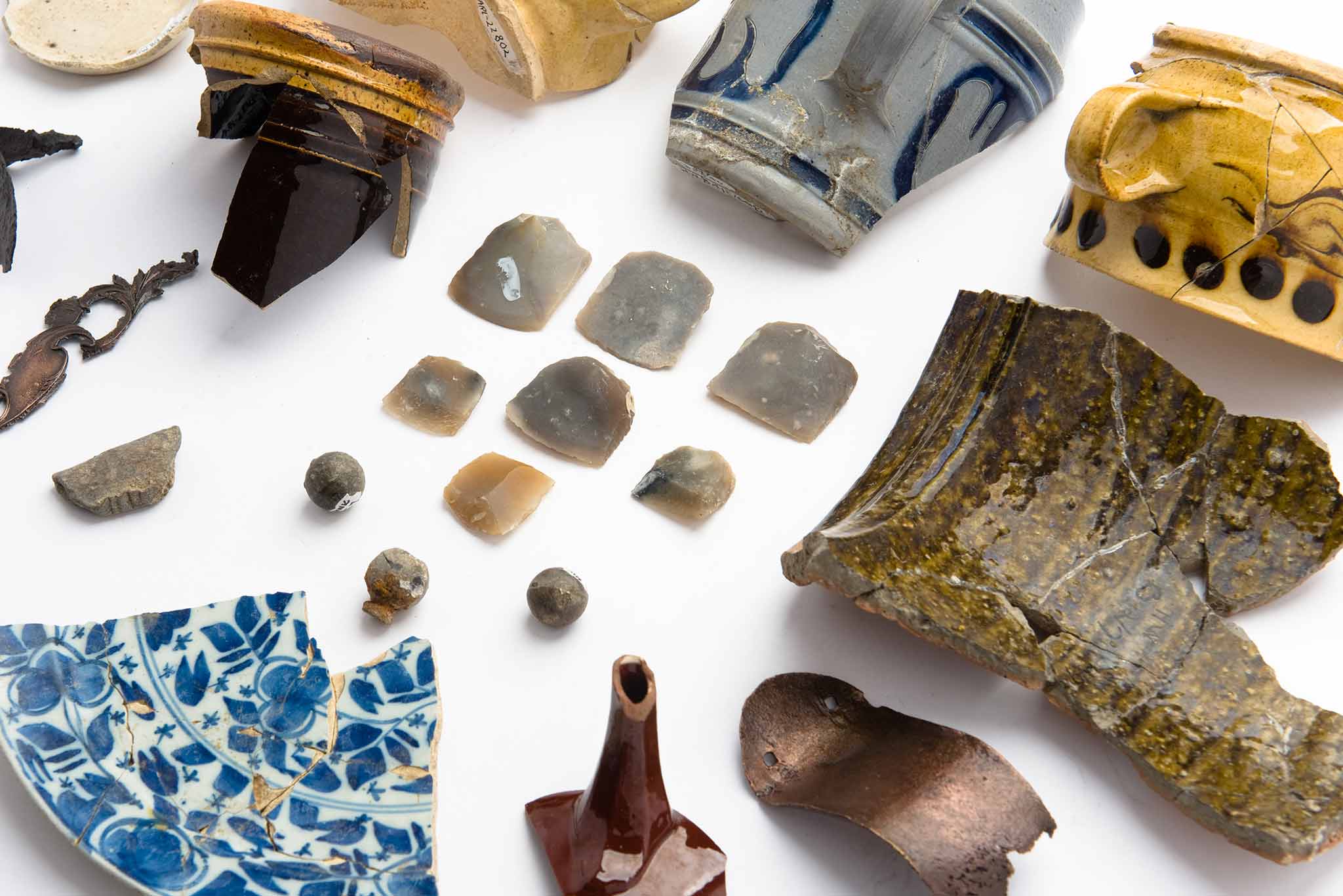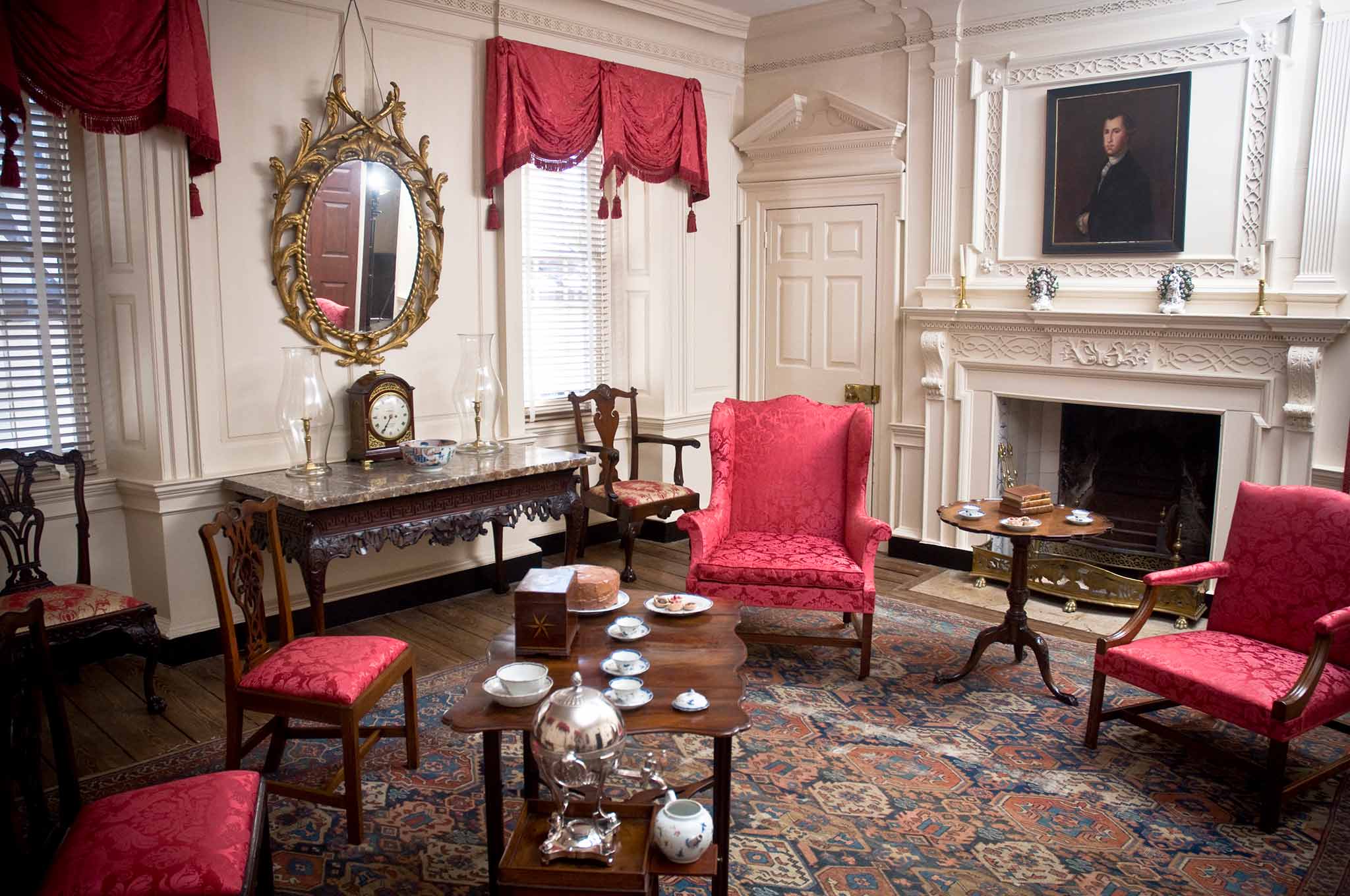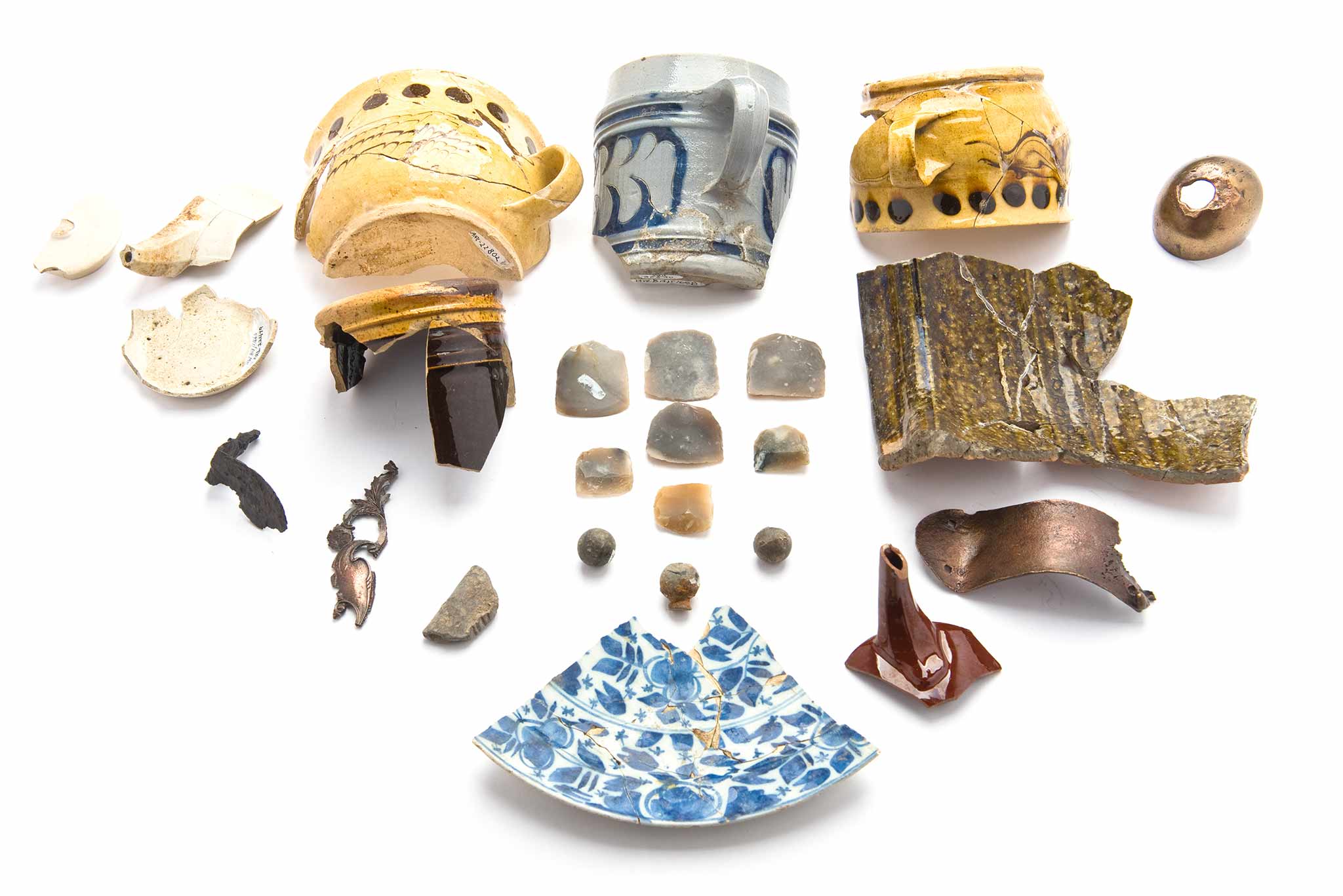Before the Heywards
When giving a tour of the Heyward-Washington house the other day, I mentioned that the information I was sharing was based on new research. The visitor was amazed that we have new information on such an old home. We are constantly digging through archives, and even in the ground, to learn more about our historic homes. For the past year, the museum has hosted PhD candidate from Syracuse University Sarah Platt. She is researching the archaeological artifacts recovered from the 1970s excavations at the Heyward-Washington House. The artifacts from this dig, and later digs, have given us a lot of information on the many inhabitants of the Heyward-Washington House.
The house is called the Heyward-Washington house for the ownership of Thomas Heyward, signer of the Declaration of Independence, from 1770 – 1795 and the famous house guest of 1791, President George Washington. The lot was inhabited by other people, both free and enslaved, before and after the Heyward occupation. A good portion of Ms. Platt’s dissertation will focus on the family owning the property prior to the 1770s, the Milners. Ms. Platt has done extensive work looking at historical accounts, maps, and artifacts to bring a new focus to the Heyward-Washington House. We are excited to be able to incorporate this new information into public knowledge of our historic home.
Dr. Elaine Herold’s archaeological and historical research in the 1970s has revealed the following:
John Milner, a gunsmith, was in possession of the property in the 1730s. He was operating a gunsmithing business on this site by 1737, and living in a small wooden house with his wife and five children. In an advertisement for an adjoining property, Mr. “Miller’s” gunsmith is described as “the sign of the Pine Tree” (South Carolina Gazette, Janury 26, 1740). The foundations of this early home were found during archaeology of the site in 1975. Much of Church Street at this time were craftsmen like Milner, neighbors include Abraham Knight, a tallow chandler and Mr. Cathcart, who advertised “rum, sugar, lime juice, earthenware, and glass decanters” for sale (SC Gazette, December 8, 1737). Other merchants and craftsmen advertising from Church Street at that time included a carpenter, a clock and watch repairman, an engraver from London, a milliner, and a woman who did needlework.
The Great Fire in November of 1740 destroyed the Milner house and its outbuildings as well as over 300 dwellings in Charles Town. John Milner submitted a claim to the British House for aid, reporting that he had lost much of his own property while salvaging arms for the government (Easterby 1951:479-486). Milner had cleaned and repaired arms for the Assembly since 1736; that year it was agreed that Major Robert Brewton should take steps to guard Milner’s house during holidays, to safeguard the public arms stored there (Easterby 1951:52). Milner evidently resumed his business after the 1740 fire; for his son advertised that he continues his father’s business after his death in 1749.
At the time of his death, Milner owned eleven slaves, at least three of whom were skilled in the gunsmith business. In his will, he divided the slaves among heirs, but instructs them to sell two of the skilled men (table 1). From examining the will you can see that enslaved families were divided among Milner’s children. The slave Celia went to Martha, Celia’s son went to Sarah and Celia’s daughter went to Mary. After Milner’s death, his son John Milner Jr. continued his father’s business.
Will of John Milner, of Charles Town, Gunsmith
27 September 1749
- To loving sons John Jr. and Solomon all wearing apparel.
- To son John, my negro Fellow Prince a gunsmith and my mulatto Boy Slave Joe.Also my smiths pair of Bellows, an anvil and a vice.
- To Solomon, Negro slave Ladd Dandy and Negro boy Jack.
- To daughter Sarah, my Negro slave wench hester and my Negro slave Boy Isaac, the son of Celia; Also out of real estate the sum of 850 pounds, current money to be paid in 3 years , in meantime she be allowed out of rents and profits the sum of 70 pounds current money yearly.
- To daughter Mary, Negro slave wench Mariam and Negro slave Girl, the daughter of Celia, also 850 pounds within 3 years.
- To daughter Martha, Negro slave wench Celia, also out of real estate 1000 pounds current money within 3 years, and in meantime she be allowed a sufficient maintenance.
- To wife Agathy, out of real estate, 500 pounds current money in 3 years.
All real estate, subject to payments to 2 sons. Residue to be divided between 5 children. 2 Negro men slaves, Prince a blacksmith and Jack a carpenter to be sold and money divided between 5 children.
(Will proved 13 October 1749) (WPA Project, Wills, vol. 6, p. 200)
The Milner occupation is just one example of our ongoing research. We never stop learning new information relating to our historic house. There is always more to discover and new history is being made every day.
-Stephanie Thomas, Chief of Education and Interpretation





